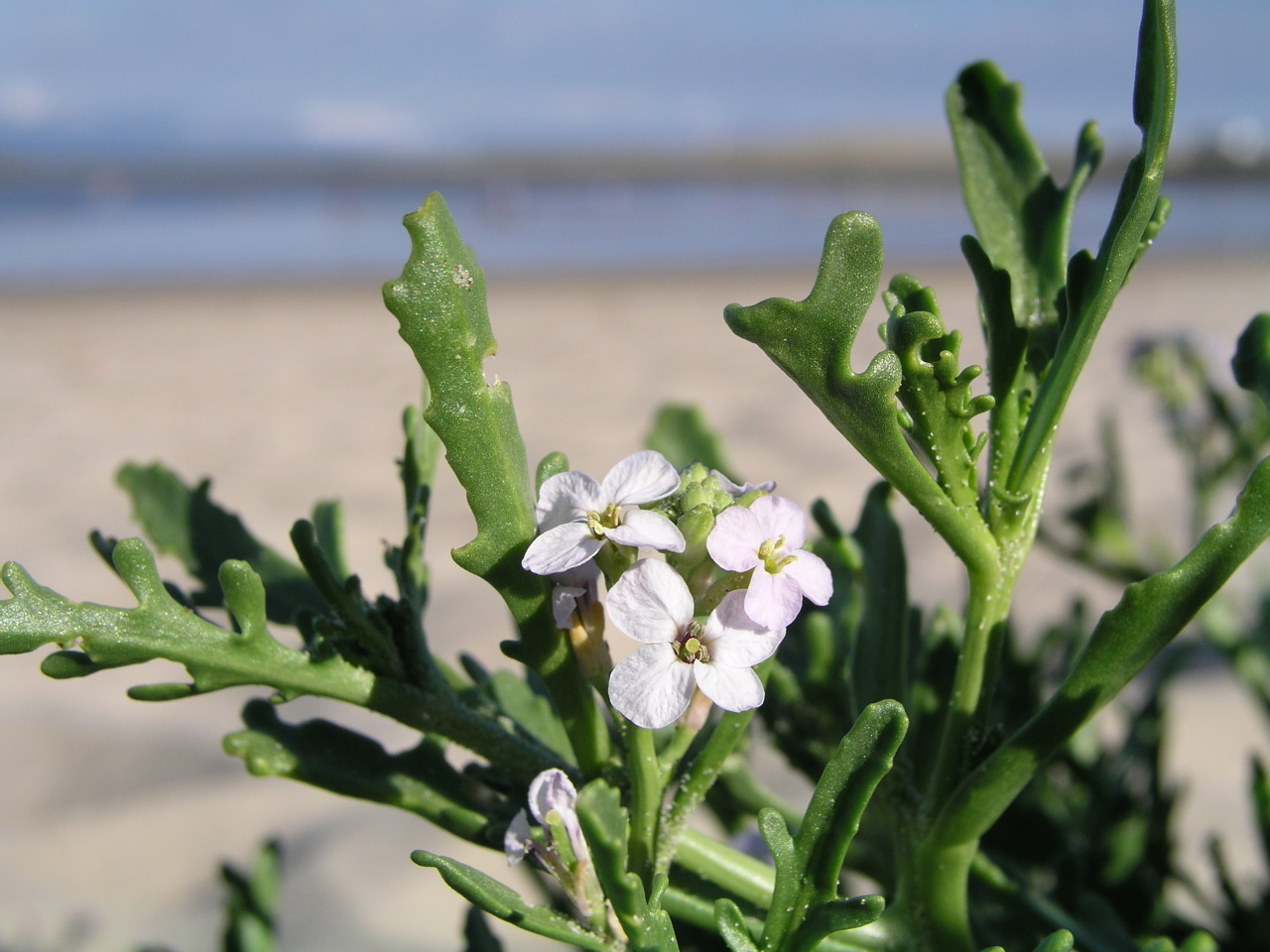
Cakile maritima (Eurasian Sea Rocket) is, like C. edentula, a salt-tolerant succulent plant of the family Brassicaceae (Cabbage family, Eurasian Sea Rocket is native from northernmost Scandinavia to the Mediterranean and the Canary Islands. The first definite North American records were from ballast piles in East and Gulf Coast ports in the 19th century. Some plants were briefly established in Anne Arundel County, Maryland, from 1958 to 1980, but have not been collected recently. On the West Coast, it was first collected on Stinson Beach, California, north of San Francisco Bay, in 1936 and spread rapidly north and south, reaching Baja California by1963, and Haida Gwai, British Columbia by 1967. The early introduction may have been by dry ballast or cargo, but this plant, like C. edentula, spread rapidly by floating seed-pods. Sea-Rockets grow on beaches, dunes, and rocky shores at or above the high-tide mark, The plants grow to about 800 mm tall, with purplish-white 4 petaled flowers. Leaves of Eurasian Sea-Rockets are more deeply lobed than those of the American species. Cakile maritima has been introduced to Argentina, Australia, New Zealand, and New Caledonia. In much of its introduced range, C. maritima has completely or partially replaced C. edentula.